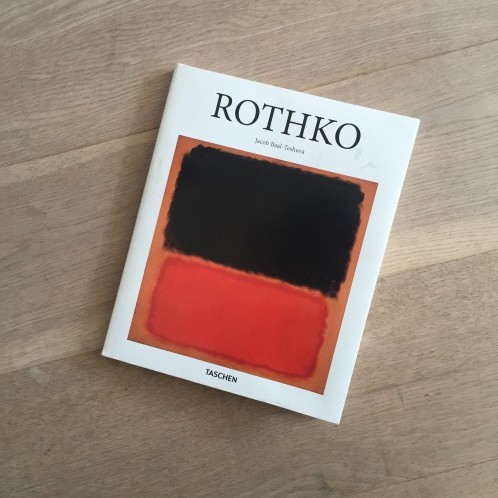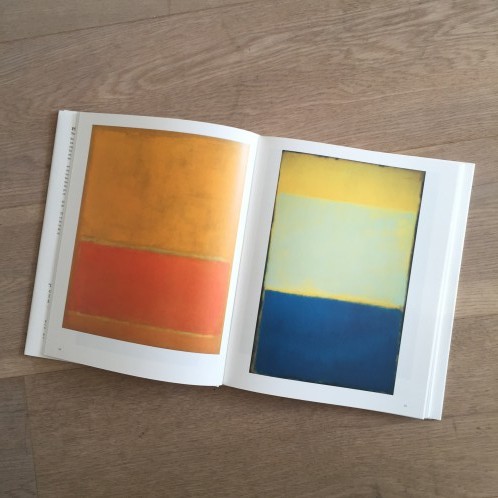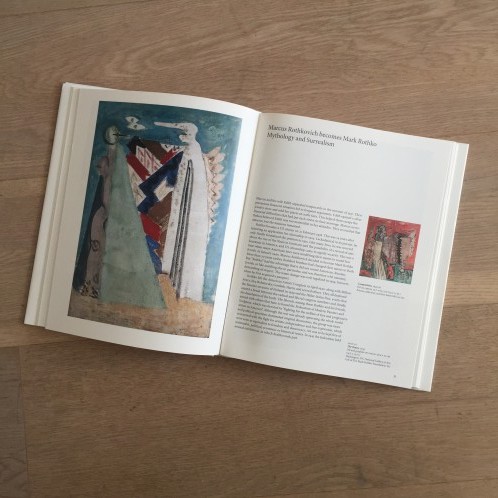Mark Rothko
Sunday Read
Art critic, curator and author Jacob Baal-Teshuva is the author of Taschen publication Rothko. As hinted by the title, the book is dedicated to the life, career and story of one of the leading painter of the 20th century, Mark Rothko.
Marcus Rothkovich, better known as Mark Rothko after that he changed name in 1940 is the focus point of Taschen’s publication. The book is organized in seven chapters narrating his childhood in Russia and Portland and his studies in New York in the first two sections. It then focuses on the difficult 1940-1946 years for the American artist who had a hard time getting recognition for his paintings. His oeuvre is especially known from the 1940s. Time when Rothko began to translate into painting the emotion of music described by Nietzsche. By working on the dissolution of the human form, Rothko reached is foremost art. Art finally recognized in 1946, the turning point in Rothko’s career marked by a solo show organized by art collector Betty Parsons. From then on, Rothko’s fame was not to explain anymore and the commissions were plentiful and fruitful. From the Seagram Building’s murals in New York to the Chapel for St. Thomas Catholic University in Houston, the last three chapters of the book concentrate on Rothko’s notable moments before his death in 1970.
Taschen’s publication is be well written and explanatory, yet, nothing can compare to the power of Rothko’s art pieces illustrated in the book. As the painter once said: “No possible set of notes can explain our paintings. Their explanation must come out of a consummated experience between picture and onlooker. The appreciation of art is a true marriage of minds. And in art as in marriage, lack of consummation is grounds for annulment.”



Archive
- Dezember 2016 (1)
- Oktober 2016 (3)
- September 2016 (24)
- Juli 2016 (20)
- Juni 2016 (24)
- Mai 2016 (18)
- April 2016 (18)
- März 2016 (21)
- Februar 2016 (11)
- Januar 2016 (20)
- Dezember 2015 (20)
- November 2015 (37)
- Oktober 2015 (30)
- September 2015 (24)
- August 2015 (4)
- Juli 2015 (30)
- Juni 2015 (9)
- Mai 2015 (17)
- April 2015 (23)
- März 2015 (18)
- Januar 2015 (8)
- Dezember 2014 (1)
- November 2014 (3)
- Oktober 2014 (10)
- September 2014 (4)
- August 2014 (2)
- Juli 2014 (3)
- Juni 2014 (2)
- Mai 2014 (5)
- April 2014 (11)
- März 2014 (12)
- Februar 2014 (13)
- Januar 2014 (10)
- Dezember 2013 (5)
- November 2013 (13)
- Oktober 2013 (24)
- September 2013 (18)
- August 2013 (26)
- Juli 2013 (13)
- Juni 2013 (35)
- Mai 2013 (44)
- April 2013 (49)
- März 2013 (61)
- Februar 2013 (54)
- Januar 2013 (46)
- Dezember 2012 (50)
- November 2012 (58)
- Oktober 2012 (62)
- September 2012 (61)
- August 2012 (63)
- Juli 2012 (64)
- Juni 2012 (61)
- Mai 2012 (63)
- April 2012 (51)
- März 2012 (67)
- Februar 2012 (37)



